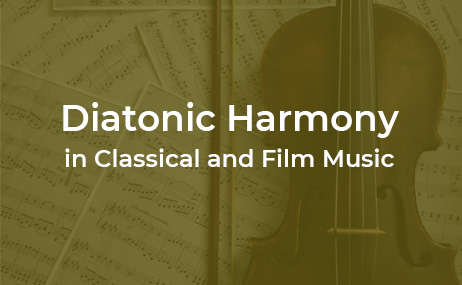REQ: Film Music Notes Diatonic Harmony in Classical and Film Music

Learn how to write diatonic harmony in both a classical “strict style” and a more film-oriented “free style”, and see how the two are combined in cues from well-known film scores. Course material is presented from a compositional point of view, showing not just how a chord resolves, but the progressions it appears in and, most importantly, where that progression tends to appear in a phrase. The material is comprehensive, covering that of a university-level textbook but adding the more film-specific techniques of free style as well. Plus, get the course Fundamentals of Reading Music absolutely free when you enroll in Diatonic Harmony!
Diatonic Harmony – Course Content:
Preliminaries
Strict Style vs. Free Style
Strict-Style Rules for Four-Part Writing
Voice Leading
Non-Chord Tones
Melody-Bass Counterpoint
Harmonic Progressions – General Concepts
Common Root Motions
The Three Progression Types
Writing Melodies from Progressions
About Our Examples
Cadential Progressions – Strict and Free Style
Dominant and Final Tonic Chords
Common Subdominant Chords
Less Common Subdominant Chords
Initial Tonic Chords
Tonic-Prolongational Progressions – Strict Style
Root-Root Prolongations
3rd-3rd Prolongations
Root-3rd Prolongations
Leading-Tone 7th Chords
Expanding a Chord with Arpeggiation
Tonic-Prolongational Progressions – Free Style
Major Keys
Major-Tonic Substitutes and Multiple Prolonging Chords
Minor Keys
Minor-Tonic Substitutes
Prolonging Chords Other than Tonic – Strict Style
Pedal 6/4
Passing 6/4
Other Passing Chords
Putting It All Together
Composing in Strict Style
Composing in Free Style
